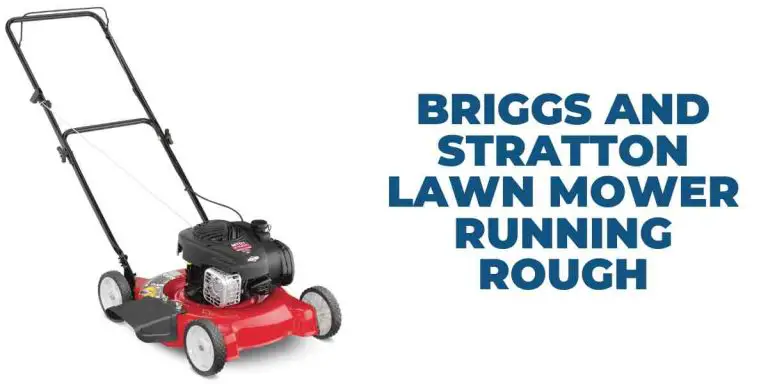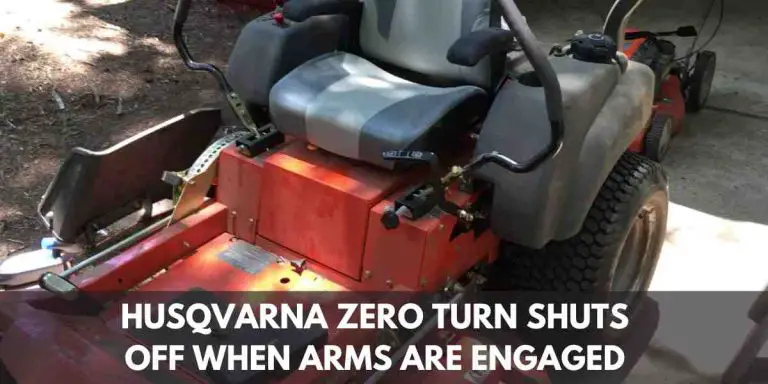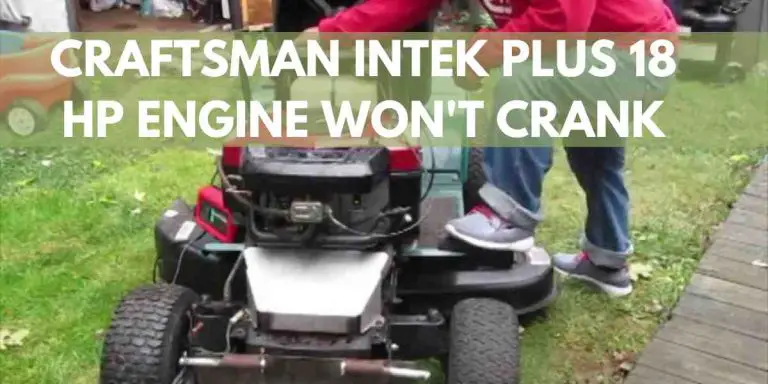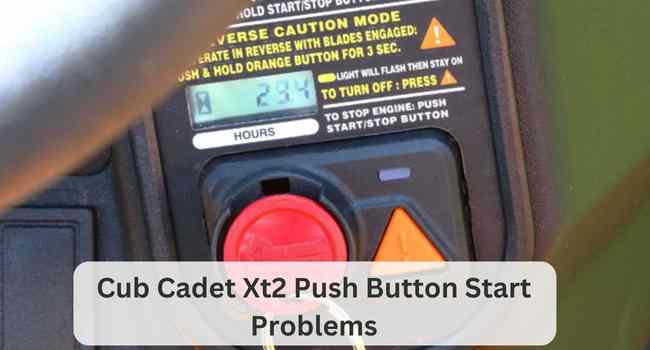Cub Cadet Fuel Injection Problems: Troubleshooting Tips for Seamless Performance
Cub Cadet fuel injection problems can cause various issues in the performance and operation of your equipment. We will discuss common fuel injection problems faced by Cub Cadet users and provide solutions to resolve them effectively.
Fuel injection problems can be a headache for Cub Cadet owners, as they can lead to poor engine performance, difficulty in starting the equipment, and even engine stalling. These issues can arise due to a variety of reasons, including clogged fuel injectors, fuel pump malfunctions, or problems with the fuel pressure regulator.
Resolving these problems often requires thorough inspection, cleaning, and potential replacement of affected components. By identifying and addressing fuel injection problems promptly, you can ensure optimal functioning of your Cub Cadet equipment and extend its lifespan. Read on to learn more about common fuel injection problems and their solutions for Cub Cadet machines.
Common Cub Cadet Fuel Injection Problems
Symptoms of Fuel Injection Issues
If you own a Cub Cadet equipment that utilizes fuel injection technology, it’s crucial to be aware of the common fuel injection problems that can arise. Identifying these issues early on can help prevent further damage and ensure the smooth operation of your machine. Here are some symptoms to watch out for:
- Poor Fuel Economy: One of the telltale signs of a fuel injection problem is a sudden decrease in fuel efficiency. If your Cub Cadet equipment is burning through fuel more quickly than usual, it could indicate an issue with the fuel injection system.
- Engine Misfires: Another common symptom of fuel injection problems is engine misfires. If you notice your engine sputtering, hesitating, or stalling, it’s likely that a fuel injection issue is to blame.
- Difficulty Starting: Difficulty starting your Cub Cadet equipment can also signal a fuel injection problem. If you find that your machine is taking longer to start or doesn’t start at all, it’s worth investigating the fuel injection system.
- Decreased Performance: A decrease in overall engine performance is another red flag pointing to fuel injection issues. You may notice reduced power, acceleration, or responsiveness when operating your equipment.
- Check Engine Light: Finally, the check engine light illuminating on your Cub Cadet equipment’s dashboard can be an indication of a fuel injection problem. Never ignore this warning and promptly address the issue to avoid further complications.
Importance of Addressing Fuel Injection Problems Promptly
It’s no secret that a properly functioning fuel injection system is vital for the optimal performance of your Cub Cadet equipment. Addressing fuel injection problems promptly is of utmost importance to avoid prolonged downtime and expensive repairs. Here’s why:
- Prevent Further Damage: Ignoring or delaying fuel injection issues can lead to more significant and costly damage to your equipment’s engine. By promptly addressing these problems, you can avoid further complications and preserve the longevity of your Cub Cadet machine.
- Maintain Fuel Efficiency: Fuel injection problems can considerably impact your machine’s fuel efficiency, leading to increased operating costs. Timely resolution of these issues will help ensure that your equipment continues to operate efficiently and cost-effectively.
- Ensure Reliable Performance: A faulty fuel injection system can result in unpredictable and unreliable performance of your Cub Cadet equipment. By promptly resolving these issues, you can maintain consistent and reliable operation, reducing the risk of unexpected breakdowns.
- Extend Lifespan: Taking care of fuel injection problems promptly not only prevents immediate issues but also helps extend the lifespan of your Cub Cadet equipment. Regular maintenance and prompt repairs contribute to the overall longevity and durability of your machine.
In conclusion, being aware of the symptoms of fuel injection problems and addressing them promptly is crucial for the smooth operation and longevity of your Cub Cadet equipment. By vigilantly monitoring your machine’s performance and taking immediate action when issues arise, you can ensure consistent, reliable, and efficient operation.
Troubleshooting Steps For Cub Cadet Fuel Injection Problems
Step 1: Checking for fuel leaks
One of the primary causes of fuel injection problems in Cub Cadet equipment is fuel leaks. If you suspect a fuel leak, it’s important to address it promptly to prevent damage to the fuel system and ensure optimal performance. Here’s how you can troubleshoot and resolve fuel leaks:
Substep: Identifying common sources of fuel leaks
Start by visually inspecting the fuel system components, such as fuel lines and connections, fuel tank, and fuel injectors. Look out for any signs of cracks, corrosion, or loose fittings that may cause fuel to leak. The most common sources of fuel leaks include:
- Cracked or damaged fuel lines
- Loose or worn-out fuel hose clamps
- Faulty fuel tank cap
- Deteriorated fuel injector seals
Substep: Repairing fuel leaks
If you discover a fuel leak, take immediate action to fix it. Depending on the source of the leak, you may need to:
- Replace cracked or damaged fuel lines
- Tighten or replace worn-out fuel hose clamps
- Replace a faulty fuel tank cap
- Replace deteriorated fuel injector seals
Step 2: Inspecting fuel injectors
Fuel injectors play a crucial role in delivering the right amount of fuel to the engine. If the fuel injectors become clogged or malfunction, it can lead to fuel injection problems. Follow these steps to inspect and address issues with fuel injectors:
Substep: Signs of clogged or malfunctioning fuel injectors
Look out for the following indications that your fuel injectors may be clogged or malfunctioning:
- Engine misfires or runs rough
- Decreased fuel efficiency
- Rough idling
- Difficulty starting the engine
Substep: Cleaning or replacing fuel injectors
If you suspect that your fuel injectors are clogged or malfunctioning, you can try cleaning them using a fuel injector cleaner. This involves adding the cleaner to the fuel tank and running the engine to remove deposits and restore proper fuel flow. However, if cleaning doesn’t resolve the issue, it may be necessary to replace the fuel injectors altogether.
Step 3: Testing fuel pressure
Proper fuel pressure is essential for the fuel injection system to work effectively. To diagnose fuel injection problems, you should test the fuel pressure. Here’s how:
Substep: Using a fuel pressure gauge for accurate readings
Connect a fuel pressure gauge to the fuel system according to the manufacturer’s instructions. Start the engine and observe the pressure reading on the gauge. Compare it to the recommended pressure range specified in the Cub Cadet equipment’s manual.
Substep: Interpreting fuel pressure test results
If the fuel pressure falls outside the recommended range, it indicates a problem with the fuel supply. Low pressure may suggest a weak fuel pump or a clogged fuel filter, while high pressure may indicate a faulty fuel pressure regulator. Further investigation and appropriate action will be necessary to address the issue.
Step 4: Examining fuel filters
Fuel filters are essential for trapping impurities and preventing them from entering the fuel system. Over time, these filters can become clogged, causing fuel injection problems. Follow these steps to examine and maintain the fuel filters:
Substep: Types of fuel filters in Cub Cadet equipment
Cub Cadet equipment typically incorporates two types of fuel filters:
- Primary fuel filter: This filter is usually located between the fuel tank and the fuel pump, designed to capture larger contaminants.
- Secondary fuel filter: Located between the fuel pump and the fuel injectors, the secondary filter is responsible for removing smaller particles that may have bypassed the primary filter.
Substep: How to clean or replace fuel filters
Regularly clean or replace fuel filters to prevent blockages and ensure optimal fuel flow. Refer to the Cub Cadet equipment’s manual for specific instructions on how to clean or replace the primary and secondary fuel filters.
By following these troubleshooting steps, you can effectively address common fuel injection problems in Cub Cadet equipment. Remember to always consult the equipment’s manual and consider seeking professional assistance if you encounter persistent issues.
Preventive Measures To Maintain Cub Cadet Fuel Injection System
Regular maintenance is the key to keeping your Cub Cadet fuel injection system functioning smoothly and prolonging its longevity. By taking the necessary preventive measures, you can avoid the common fuel injection problems that may arise and ensure optimal performance of your equipment. In this article, we will discuss the importance of regular maintenance for the fuel injection system and provide you with a recommended maintenance schedule for its components.
Importance of Regular Maintenance for Fuel Injection System Longevity
Proper maintenance of your Cub Cadet fuel injection system is crucial to maximize its lifespan and prevent costly repairs. Regular maintenance helps keep the system clean and free from contaminants that could clog the fuel injectors. It also ensures the correct fuel-air mixture ratio, allowing your equipment to deliver optimal performance while minimizing fuel consumption.
By following a regular maintenance routine, you can easily spot potential issues before they escalate into major problems. Early detection of fuel injection problems allows for timely repairs and prevents further damage to the system.
Recommended Maintenance Schedule for Fuel Injection System Components
Here is a recommended maintenance schedule to keep your Cub Cadet fuel injection system in excellent condition:
| Maintenance Task | Frequency |
|---|---|
| Inspect fuel lines for cracks or leaks | Every 50 hours of operation |
| Clean or replace fuel filter | Every 100 hours of operation |
| Check fuel pump pressure | Every 200 hours of operation |
| Inspect fuel injectors for clogs or blockages | Every 300 hours of operation |
| Clean throttle body and intake manifold | Every 500 hours of operation |
Following this maintenance schedule will help maintain the fuel injection system’s optimal performance and prevent potential problems caused by neglect or wear and tear. It is important to note that operating conditions and environmental factors may require more frequent maintenance, so always consult your Cub Cadet’s manual for specific recommendations based on your equipment’s usage.
Remember, investing a little time and effort in regular maintenance can save you from expensive repairs and ensure your Cub Cadet equipment operates at its best. By adhering to this recommended schedule, you can enjoy reliable and efficient performance from your fuel injection system for years to come.
Professional Help And Troubleshooting Support For Cub Cadet Fuel Injection Problems
Fuel injection problems in your Cub Cadet equipment can be frustrating and disruptive. These problems can affect engine performance, fuel efficiency, and overall reliability. When you encounter such issues, it’s important to seek professional assistance and troubleshoot to find the right solutions. In this section, we will explore when to seek professional help and highlight valuable resources for troubleshooting and finding solutions online.
When to seek professional assistance
While some fuel injection problems can be resolved through DIY troubleshooting, certain complex issues may require the expertise of a professional. Here are a few instances where you should consider seeking professional assistance:
- If you lack experience or knowledge in diagnosing and resolving fuel injection problems.
- When multiple attempts at troubleshooting have failed to address the issue.
- If your Cub Cadet equipment is still under warranty, seeking professional help can ensure you don’t void the warranty by attempting repairs yourself.
By engaging a professional, you can benefit from their expertise and experience, ensuring that your fuel injection problems are diagnosed and resolved accurately.
Resources for troubleshooting and finding solutions online
The internet provides a vast array of resources for troubleshooting and finding solutions to fuel injection problems in your Cub Cadet equipment. Here are a few valuable online resources to consider:
- Official Cub Cadet website: The official Cub Cadet website is a reliable source to find product-specific manuals, guides, and troubleshooting information. Visit their website and search for your particular model or fuel injection problem to access relevant resources.
- Online forums and communities: Various online forums and communities dedicated to Cub Cadet equipment can be incredibly helpful. These platforms allow you to connect with fellow Cub Cadet owners, enthusiasts, and professionals who can provide insights, tips, and troubleshooting advice.
- YouTube tutorials: YouTube is an excellent platform to find video tutorials that demonstrate fuel injection troubleshooting procedures. Watching step-by-step visuals can help you better understand the process and identify potential solutions.
By utilizing these online resources, you can gather valuable information and guidance to troubleshoot your fuel injection problems. However, it’s essential to exercise caution and verify the credibility of the sources before attempting any repairs or adjustments.
Remember, seeking professional assistance and leveraging online resources can significantly improve your chances of effectively resolving fuel injection problems in your Cub Cadet equipment. Whether it’s obtaining expert advice or accessing reliable troubleshooting information, these resources can help you get your equipment back to optimal performance with minimal downtime.
Frequently Asked Questions Of Cub Cadet Fuel Injection Problems
What Are The Common Fuel Injection Problems In Cub Cadet?
Fuel injection problems in Cub Cadet can stem from clogged fuel filters, faulty injectors, or a malfunctioning fuel pump. These issues may result in poor engine performance, difficulty starting or running the engine, or decreased fuel efficiency. Regular maintenance and timely repair can help prevent or resolve these problems.
How Can I Troubleshoot Fuel Injection Issues In My Cub Cadet?
To troubleshoot fuel injection problems in your Cub Cadet, start by checking for clogged fuel filters and ensuring proper fuel flow. You can inspect the fuel injectors for any signs of damage or clogging. Verify that the fuel pump is functioning correctly.
If the issues persist, it is recommended to consult a professional mechanic for further diagnosis and repairs.
What Are The Signs Of A Failing Fuel Pump In Cub Cadet?
A failing fuel pump in a Cub Cadet can exhibit signs such as engine misfires, loss of power or acceleration, difficulty starting the engine, and frequent stalling. Additionally, you may notice a decrease in fuel efficiency or a strong odor of gasoline.
If you experience any of these symptoms, it is advisable to have the fuel pump inspected and replaced if necessary.
How Can I Prevent Fuel Injection Problems In My Cub Cadet?
To prevent fuel injection problems in your Cub Cadet, regularly check and replace the fuel filters as recommended by the manufacturer. It is essential to use high-quality fuel and keep the fuel system clean by using fuel additives periodically. Additionally, regular servicing and maintenance, including cleaning or replacing injectors as needed, can help ensure proper functioning of the fuel injection system.
Conclusion
Dealing with fuel injection problems in your Cub Cadet can be a frustrating experience. From clogged fuel filters to faulty injectors, these issues can lead to poor performance and reduced fuel efficiency. However, with proper maintenance and regular inspections, you can identify and address these problems before they escalate.
Trusting a professional technician and following recommended maintenance guidelines will ensure your Cub Cadet performs optimally for years to come.




